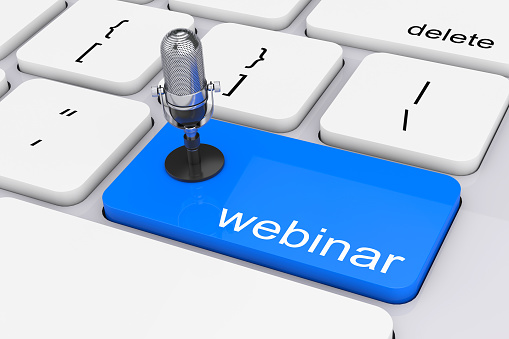Are you looking to hold an online event but don’t want to deal with the hassle of live streaming? Or maybe you’re worried about technical difficulties ruining your presentation?
Pre-recorded webinars are the perfect solution!
In order to host a successful pre-recorded webinar, there are a few things you’ll need to do. Check out these tips on how to host prerecorded webinar events below!
INDEX
What is a Pre-recorded Webinar?
Why Host Pre-recorded Webinars
You can reach a wider audience.
You can create more engaging content.
You can generate leads and sales.
You can edit out any mistakes that you make during the recording.
You can schedule it in advance.
Steps for Hosting a Successful Pre-recorded Webinar
Step 1: Plan and prepare your content.
Step 2: Choose quality recording equipment
Step 3: Invest in the webinar tool
Step 4: Practice
Step 5: Record your webinar
Step 6: Edit the recording as needed
Step 7: Upload your video to the webinar platform
Step 8: Promote your webinar
Wrap Up
What is a Pre-recorded Webinar?
Nowadays, people are busier than ever, and finding the time to attend live events can be difficult. However, the rise of technology has made it possible to participate in events from the comfort of our own homes.
A pre-recorded webinar is a type of web-based seminar that allows the presenter to record their PowerPoint presentation, voice-over, and any other materials before the event. Just as a seminar is an educational or informative session, a webinar is the same.
Why Host Pre-recorded Webinars
Just like in-person events, webinars can be a great way for your business. But what are the benefits of hosting pre-recorded webinars instead of live ones?
Here’s why you need to create pre-recorded webinars:
You can reach a wider audience.
Recording your webinar means that people from all over the world can access it at a time that suits them. This is ideal for busy professionals who may not be able to attend live webinars.
You can create more engaging content.
Pre-recording allows you to edit your content and add visual elements such as PowerPoint slides or a video file. This makes for a more engaging experience for the viewer.
You can generate leads and sales.
Including a call-to-action in your webinar recording can encourage viewers to take the next step. This is to sign up for your newsletter or make a purchase.
You can edit out any mistakes that you make during the recording.
This gives the presenter the ability to have full control over the webinar content. Plus, it ensures that the presentation is error-free.
You can schedule it in advance.
You can promote your pre-recorded and even your live webinar well in advance. Not only are they convenient, but they also allow you to learn at your own pace. Additionally, rewatch sections that you didn’t understand the first time.
So there you have it – the benefits of hosting webinars.
Get More Webinar Tips with StealthSeminar
Steps for Hosting a Successful Pre-recorded Webinar
You’ve decided to host a pre-recorded webinar content. You’re excited to reach a larger audience with your message. But you’re also wondering how to ensure your webinar is successful.
Here’s the guide you can take to ensure your pre-recorded webinar is engaging.
Step 1: Plan and prepare your content.
As any seasoned event planner knows, hosting a successful webinar requires careful preparation.
Here are some tips to help you ensure that your pre-recorded webinar goes off without a hitch:
- Choose a webinar topic that will be of interest to your target audience. If your goal is to generate leads, then focus on educational topics that will provide value to your potential customers.
- Write a script that is both engaging and informative. Keep in mind that you will be speaking to an audience of diverse backgrounds and levels of expertise. That’s why you need to make sure to keep your language clear and concise.
- Create a webinar outline. This will help you stay on track and ensure that your webinar is cohesive and flows smoothly.
- Choose visuals carefully. Use images and videos that are high quality and relevant to your topic.
Once you’re done preparing, it’s time to take the next step!
Step 2: Choose quality recording equipment
When choosing the right recording equipment for your needs, there’s much to consider. But with a little research, you can choose the perfect fit for your business.
Choose a high-end microphone and recorder if you want top-notch audio quality. If you’re on a tight budget, excellent options are still available that won’t break the bank. Once you’ve chosen your recording equipment, test it to ensure it meets your expectations.
Step 3: Invest in the webinar tool
Choose a webinar platform that’s easy to use and has all the necessary features. Many different platforms are available, so take some time to explore your options.
Once you’ve found a platform that you’re happy with, sign up for a free trial to make sure it meets all of your needs.
Step 4: Practice
Before you record your webinar, it is important to take some time to practice. This will help you feel more comfortable with the material and ensure you deliver a polished presentation.
There are three ways that you can practice for your webinar.
- Try rehearsing your script aloud. This will get a feel for the flow of the presentation and ensure that you do not leave anything out.
- Record a mock-up of the webinar using PowerPoint or another presentation software. This will allow you to see how the visuals will look and get an idea of the overall flow of the presentation.
- Consider giving the presentation to a small group of friends or family members. This will allow you to receive feedback and make necessary adjustments before recording the webinar.
By taking some time to practice beforehand, you can ensure that your webinar is engaging and informative.
Step 5: Record your webinar
You just need to hit the record button in your webinar software.
There are a few things to keep in mind when recording your webinar:
- Make sure you are in a quiet location with minimal background noise.
- Use a high-quality microphone so that your audience can hear you clearly.
- Just make sure you have a stable internet connection.
- Using slides or screen sharing, ensure the resolution is high enough so your audience can see everything clearly.
- Test your setup beforehand to ensure everything is working properly.
- Try to relax and just be yourself.
A recording is where all of your hard work will come together, and you will be able to share your message with your audience.
Step 6: Edit the recording as needed
Once you have recorded your webinar, it’s time to edit it and add any finishing touches. You can edit out some parts that you don’t like or think could be improved. Additionally, you can also add in new sections or change the order of things.
This is your chance to really make the recording your own, so don’t be afraid to be creative.
Step 7: Upload your video to the webinar platform
Now it’s time to upload your masterpiece to webinar platforms so everyone can watch it.
This process is usually pretty straightforward – just follow the instructions on the platform’s website. Once your video is uploaded, sit back and enjoy the fruits of your labor!
Step 8: Promote your webinar
Last but not least, don’t forget to promote your webinar to increase audience engagement.
Here are ideas to get you started in your webinar success:
- Social media. Create social media posts about your upcoming webinar and share them with your followers. Use attractive images and compelling copy to grab attention and encourage clicks. Make sure to use relevant captions so people can easily find your posts.
- Email marketing. Send out emails to your subscribers about your upcoming webinar. Again, use attractive visuals and convincing copy to get people interested. You could even offer a discount for people who sign up for the webinar landing page.
- Blogging. Write a blog about your incoming webinar and include a call-to-action (CTA) inviting people to register. If you have a large blog following, this could be a great way to generate interest in your webinar.
- Paid advertising. You could invest in paid advertising for your webinar if you want to reach audiences.
By following these tips, you’ll be sure to give your pre-recorded videos the exposure it deserves.
Wrap Up
In conclusion, follow the steps mentioned in this blog post to ensure a successful pre-recorded webinar.
Utilize effective communication methods, create an interesting and engaging presentation, and test your event before it goes live. Doing so can provide your audience with a valuable online learning experience that is both informative and enjoyable.



